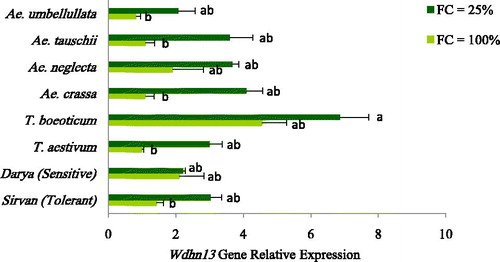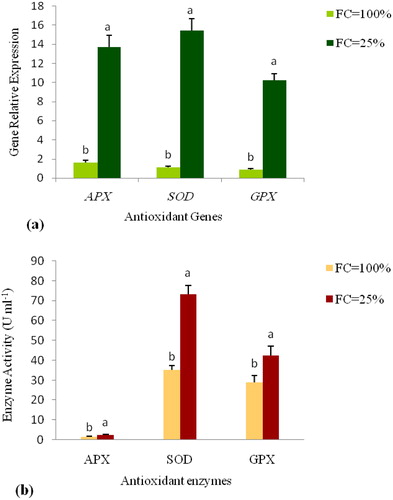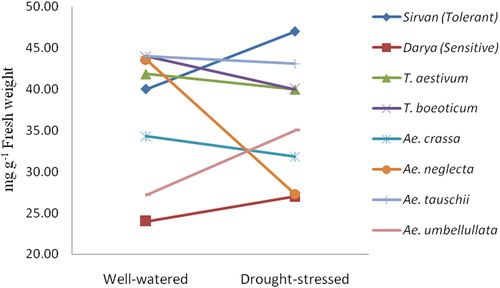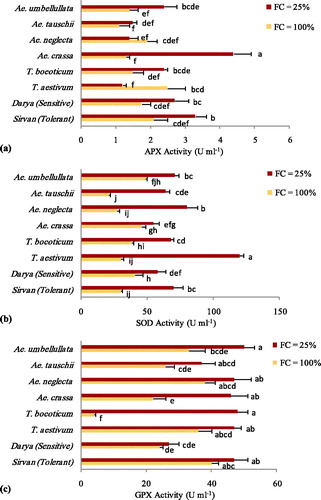Figures & data
Table 1. Specifications, genetic formula and sampling area of the wild wheat species belonging to the Triticeae genus, Aegilops and Triticum, in this study.
Table 2. Sequences of primers used for real-time PCR.
Figure 1. Relative expression level of the Wdhn13 gene in the different species belonging to the Triticeae genus along with two tolerant (Sirvan) and sensitive (Darya) reference cultivars under well-watered (FC = 100%) and drought-stressed (FC= 25%) conditions. Values are means with standard error of the means (S.E.M.) and different letters indicate a significant difference at p ≤ 0.01.

Table 3. Analysis of variance (ANOVA) for the relative expression of Wdhn13, the antioxidant genes, and the enzyme activity in the different species belonging to the Triticeae genus under the well-watered (FC = 100 %) and drought-stressed (FC = 25 %) conditions.
Figure 2. Relative expression level of the antioxidant genes (a), the antioxidant enzyme activity (b) in the well-watered (FC = 100%) and drought-stressed (FC = 25%) conditions in the different species belonging to the Triticeae genus. Values are means with standard error of the means (S.E.M.) and different letters indicate a significant difference at p ≤ 0.01.

Figure 3. Relative expression of SOD (a), APX (b), GPX (c) gene in the different species belonging to the Triticeae genus along with two tolerant (Sirvan) and sensitive (Darya) reference cultivars under the well-watered (FC = 100%) and drought-stressed (FC = 25%) conditions. Values are means with standard error of the means (S.E.M.) and different letters indicate a significant difference at p ≤ 0.01.

Figure 4. Changes in the leaf total protein content in the different species belonging to the Triticeae genus along with two tolerant (Sirvan) and sensitive (Darya) reference cultivars under well-watered (FC = 100%) and drought-stressed (FC = 25%) conditions.

Figure 5. Changes in APX (a), SOD (b) and GPX (c) enzyme in the different species belonging to the Triticeae genus along with two tolerant (Sirvan) and sensitive (Darya) reference cultivars under well-watered (FC = 100%) and drought-stressed (FC = 25%) conditions. Values are means with standard error of the means (S.E.M.) and different letters indicate a significant difference at p ≤ 0.01.

